-
Posts
838 -
Joined
-
Last visited
Content Type
Profiles
Forums
Store
Help Articles
Posts posted by jmacnaughtan
-
-
If anybody follows the method for the French buttercream in the joepastry.com link above, it has an error in it. It mentions, when making the sugar syrup:
"While the mixer is going, prepare your sugar syrup. Combine the sugar and water in a saucepan and bring them up to 248 degrees Fahrenheit."
I think the temperature should be 238 degrees F, which is the softball stage (114 C). John.
Are you sure? 248°F (120°C) sounds right to me. You're essentially making a pâte à bombe, so you'd want the sugar to cook to 118-121°C, like for an Italian meringue.
I'd also recommend making an Italian meringue and folding it into the finished buttercream. It lightens it up.
-
They've been popping up all over France for a while now- I just saw a Merveilleux shop in Lille this weekend. They're pretty basic, just meringue and buttercream covered with chocolate shavings. I don't really understand why people go crazy for them. You see lines snaking out the door.
It just seems odd that in a place with the best pastry in the world you'd queue up for meringue and buttercream.
-
-
You could make a ganache with the wine, then fold in whipped cream. Failing that, use the wine to make an anglaise, incorporate your chocolate into that then add the cream. You'll always have a problem incorporating a lot of liquid into a pâte à bombe.
As Matthew suggested, reducing the wine might be a good idea too, and if that doesn't work, use a milk chocolate with a fairly mild flavour.
-
 1
1
-
-
If your sheet pan is flat enough, you can just pour the crème brûlée directly into the ring and bake it like that. Less waste and no need to cut it out afterwards.
Although I have to say I haven't baked a brûlée layer for a cake in a long time. I find gelatin easier to use and gives a very similar result if you don't use too much. Failing that, a crémeux is a very good, easy-to-manipulate layer for an entremet, and has the advantage of being a little lighter in texture.
-
The recipe for the Rhubarb Fraisier is up. Find it here.
-
 2
2
-
-
Rhubarb Fraisier
Serves 6
This is a good summer cake. It's powerfully flavored and fragrant, but not heavy. If you don't have access to Muscat wine, you can use any other dessert wine, or kirsch.
It won't keep very well, so assemble it the day you want to eat it.
Génoise
- 100g eggs (2)
- 70g sugar
- 70g self-rising flour
- Combine the eggs and sugar in a bowl, and place over a hot water bath. Heat until it reaches 50°C.
- Remove from the heat and whip until cool, until it reaches the “ribbon” stage.
- Gently fold in the sieved flour. Ensure there are no lumps of flour.
- Grease and line a 16cm cake ring and pour in the batter.
- Bake at 180°C for around 15 minutes.
- Once cool, cut 2 horizontal slices around 5mm thick using a long serrated knife. Trim one to 14cm diameter, the other to 12cm.
Muscat syrup
- 80g sugar
- 80g water
- Muscat wine, to taste
- Place the sugar and water into a bowl. Microwave until the sugar is completely dissolved.
- Leave to cool. Add wine to taste- you want a powerful wine flavor. Reserve.
Rhubarb cream
§ Fresh rhubarb, 300g
§ Caster sugar, 30 + 30 + 30g
§ Cornflour, 15g
§ Milk, 20g
§ Egg yolks, 60g
§ Gelatin, bloomed, 2g (dry weight)
§ Butter, 100g
- Wash and chop the rhubarb, combine with the sugar and leave to macerate for half an hour.
- Cook in a pan until very tender. Purée until smooth, then weigh out 250g of puree.
- Heat the purée in the same saucepan with the second lot of sugar.
- Mix the remaining sugar with the cornstarch, and add the milk. Mix well.
- Incorporate the egg yolks.
- Temper the purée into the egg mixture, pour back into the pan and bring to the boil. Don't stop stirring or it will catch and burn. Keep at the boil for around thirty seconds.
- Take it off the heat, let it cool for a minute or two, and while still warm incorporate the gelatin.
- Cool to around 40-50°C (it shouldn't burn your finger, but it should feel warm).
- Using a stick blender/food processor, incorporate the cold butter, cut into cubes.
- Leave to cool completely in the fridge, preferably overnight.
- Before using, whip to aerate it. It will turn pale and fairly fluffy.
Strawberries
- Around 300g very fresh, very ripe strawberries, preferably Gariguette.
- Wash and remove the stalks and leaves from the strawberries.
- Reserve 9 or 10 attractive, large, similarly sized strawberries. Cut them in half, lengthwise.
- Reserve two small, attractive strawberries for decoration.
Roasted rhubarb strips (adapted from Philippe Conticini’s “Sensations”)
- One long, unblemished rhubarb stalk, around 40cm long
- Sugar
- Wash the rhubarb, and cut in half. Make sure the halves are at least 16cm long.
- Slice into long, thin strips, around 2mm thick.
- Arrange on greased parchment paper so they each overlap the strip next to them. You’ll end up with a rectangle of rhubarb. Sprinkle with sugar.
- Bake at 200°C for around 15-20 minutes. The rhubarb should be soft and slightly caramelized.
- Cut out a 14cm circle, and place in the freezer.
Neutral glaze (optional, smooth, slightly diluted apricot jam may be used as a replacement)
Ingredients:
- 50g sugar
- 50g water
- 4g pectin NH
- Combine the pectin with the sugar.
- Bring the water to a boil, pour in the sugar-pectin mix while whisking, and whisk well.
- Boil for 20 seconds, whisking continuously.
- Remove from the heat, transfer to a container and leave to cool.
Assembly
- Using a 16cm diameter x 4.5cm high cake ring, place it on a sheet of acetate or parchment paper. Place this on a chopping board or other flat surface. I strongly recommend lining the ring with acetate, it will make unmolding a lot easier.
- Arrange the halved strawberries around the edge of the ring, with the cut sides pressed up against the acetate.
- Place the 12cm génoise disk inside the strawberry circle. Push it in to fit.
- Soak the génoise generously with syrup.
- Pipe a layer of rhubarb cream onto the génoise, around 1cm, making sure to pipe in between the strawberries.
- Pack in as many strawberries as you can in a single layer on the cream, working in a circular fashion. Cover with cream. You don’t want the cream to be much higher than the strawberries.
- Place the second génoise disk on the cream and soak liberally.
- Cover with more cream up to the top of the cake ring and even out the top with a spatula.
- Place the circle of rhubarb on the cream. Work the glaze to loosen it up, then glaze the rhubarb.
- Decorate with the reserved strawberries and place in the fridge to set for an hour or so.
- Leave for half an hour out of the fridge to come to room temperature. Serve with muscat wine.
-
 7
7
-
-
-
I have never pureed my bananas, just mashed, and I have never seen any worms in my banana bread either.
You never get the little black threads from your bananas? I must be getting a different sort from you... I still recommend puréeing them though. You can do a lot more with purée than mashed banana.
That's the plan - doing something like that to increase the banana flavor, but by extracting some liquid from the bananas and concentrating its flavor.
This may be a silly question, but how do you extract liquid from a banana? I've never seen them go to anything thinner than a pulp.
-
I agree with that. It is a bit of a challenge. But this is just a standard vodka pie crust, so I think it will be ok if it is crisp.
Excuse me if I'm being a bit slow, but why would you put vodka in pastry?
-
If you're making banana bread, then it's not really going to make a difference if you're a couple of days over or under. Unless you have an extremely good palate, there's no way you'll be able to tell the difference between very ripe, slightly over and slightly under banana once it's baked. If you want to increase the banana flavor, you might want to add a little banana liqueur, or make a banana soak for when it comes out of the oven.
Also, I recommend puréeing the bananas and passing them through a seive. It's easier to incorporate into the batter, and you won't get any of those ugly black "worms" you often get in banana bread.
-
 1
1
-
-
I have been waiting a long time to make this cake,but I finally got around to it. Vanilla Genoise, Housemade Raspberry jam, Italian Meringue Frosting, toasted Almonds Fresh Raspberry pile. I think the reason why I don't make this cake is it does not last long, it was sold in less then 20 mins after putting on display. i don't have the man power to make a lot of Meringue, but here it is!!
Looks good- do you soak your génoise before adding the jam and frosting, or just leave it plain? While I like génoise, they can frequently be bone dry (even when not overbaked).
-
Check out what I found at the Punjab Market (which handles everything european) yesterday -
Vacuum sealed layers of cake for various projects including dobas torte.
I wonder how that affects the texture and aeration in sponge cakes... A bakery I used to work in used pre-prepared frozen sheets of génoise and joconde, but I've never seen them vacuum packed before.
Have you tried these?
-
-
Just put the recipe for the Coconut Cake on RecipeGullet. I'd be interested to hear if anybody tries making it.
-
 2
2
-
-
Coconut Cake
This was originally posted about here.
It's a fairly challenging cake to make, and you'll make your life easier if you make it over the course of a few days.
Serves 8
Coconut financier (adapted from Philippe Conticini’s “Sensations”)
- 140g icing sugar
- 95g desiccated coconut
- 95g butter
- 135g egg whites (around 4½) at room temperature
- 45g flour
- 1 teaspoon vanilla extract
- In a saucepan, cook the butter until it turns toasted, brown and nutty.
- Sieve the sugar and the flour and combine with the coconut in a bowl or stand mixer.
- Gradually whisk in the egg whites, then the vanilla, then the hot butter. Mix well.
- Grease and line a 16cm cake ring and pour in half the batter. Freeze the rest for another use.
- Bake at 180°C for around 15 minutes. It should be fully cooked but still moist. It will not rise much.
- Once cool, even out the top using a long serrated knife. You’re aiming for around 1cm of financier.
Coconut croustillant
- 30g white chocolate
- 20g neutral oil
- 30g desiccated coconut
- 20g pailleté feuilletine (or crushed wafer biscuits)
- Fleur de sel
- Combine the chocolate and oil in a bowl and microwave until melted. Mix to blend them.
- Add the coconut and feuilletine. Stir well to completely coat the dry ingredients, then add a pinch of salt. Mix again.
- While still warm, spread evenly onto the financier, aiming for a fairly thin layer. You may not need all the croustillant.
Roasted pineapple confit (adapted from Philippe Conticini’s “Sensations”)
- One small pineapple
- 40g caster sugar
- 40g lemon juice
- 1 vanilla bean, split and scraped
- 2g pectin NH mixed with a tablespoon of sugar
- Remove the skin, leaves and eyes from the pineapple. Cut in half and remove the core.
- Dust with half the sugar and roast for about an hour at 200°C, until at least a little caramelized.
- Leave to cool slightly, then dice the pineapple flesh. You’ll need 160g of it.
- Mix this with the remaining sugar, lemon juice and vanilla, cover and leave for an hour to macerate.
- Transfer to a saucepan, bring to a simmer and stir in the pectin mixture.
- Simmer for around 30 seconds, then transfer to a bowl. Leave to cool and set.
Génoise
- 100g eggs (2)
- 70g sugar
- 70g self-raising flour
- Combine the eggs and sugar in a bowl, and place over a hot water bath. Heat until it reaches 50°C.
- Remove from the heat and whip until cool, until it reaches the “ribbon” stage.
- Gently fold in the sieved flour. Ensure there are no lumps of flour.
- Grease and line a 16cm cake ring and pour in the batter.
- Bake at 180°C for around 15 minutes.
- Once cool, cut a horizontal slice around 5mm thick using a long serrated knife. Reserve.
Rum syrup
- 40g sugar
- 40g water
- Dark rum, to taste
- Place the sugar and water into a bowl. Microwave until the sugar is completely dissolved.
- Leave to cool. Add rum to taste- you want a powerful rum flavor. Reserve.
Coconut crémeux
This will make about twice as much as you need, but it’s not practical to make a smaller quantity. However, it freezes well.
§ Coconut milk, 250g + 20g
§ Caster sugar, 30 + 30g
§ Cornflour, 15g
§ Egg yolks, 60g
§ Gelatin, bloomed, 2g (dry weight)
§ Butter, 100g
- Heat the coconut milk with 30g of sugar in a fairly large saucepan.
- Mix the remaining sugar with the cornstarch, and add the remaining coconut milk. Mix well.
- Incorporate the egg yolks.
- Temper the purée into the egg mixture, pour back into the pan and bring to the boil. Don't stop stirring or it will catch and burn. Keep at the boil for around thirty seconds.
- Take it off the heat, let it cool for a minute or two, and while still warm incorporate the gelatin.
- Cool to around 40-50°C (it shouldn't burn your finger, but it should feel warm).
- Using a stick blender/food processor, incorporate the cold butter, cut into cubes.
- Leave to cool completely in the fridge, preferably overnight.
- Before using, whip to aerate it. It will turn pale and fairly fluffy.
Vanilla mousse (adapted from Francisco Migoya’s “The Modern Café”)
- 180g whole milk
- 180g double cream
- 150g sugar
- 2 vanilla beans, split and scraped
- 120g egg yolks (6)
- 240g double cream, whipped to soft peaks
- 7g gelatin, bloomed (dry weight)
- Combine the milk, first cream, half the sugar and vanilla in a saucepan. Bring to a simmer. Remove from the heat and leave to infuse for at least one hour, preferably overnight.
- When you are ready for the final assembly of the cake, bring it back to a simmer.
- Whisk the egg yolks with the remaining sugar, then temper in the hot milk mixture, return to the pan and cook to 84°C.
- Remove from the heat and incorporate the gelatin. Strain into a bowl and leave to cool to 35-40°C.
- Fold in the whipped cream in two additions. Mix until homogenous.
- Use immediately.
Neutral glaze (optional, smooth, slightly diluted apricot jam may be used as a replacement)
Ingredients:
- 50g sugar
- 50g water
- 4g pectin NH
- Combine the pectin with the sugar.
- Bring the water to a boil, pour in the sugar-pectin mix while whisking, and whisk well.
- Boil for 20 seconds, whisking continuously.
- Remove from the heat, transfer to a container and leave to cool.
Assembly
- Using a 16cm diameter x 4.5cm high cake ring, place it on a sheet of acetate or parchment paper. Place this on a chopping board or other flat surface that will fit in your freezer. I strongly recommend lining the ring with acetate, it will make unmolding a lot easier.
- Place the financier with the croustillant facing up in the circle.
- Remove the vanilla pod from the pineapple confit, the stir it to loosen it up.
- Spread a 1cm layer onto the croustillant.
- Place the génoise disc on top of the pineapple. Soak liberally with the syrup.
- Spread a layer of whipped coconut crémeux on top of the génoise. You’re aiming to leave a 5-10mm gap between the top of the crémeux and the top of the circle.
- Freeze for at least 3 or 4 hours, preferably overnight.
- Prepare an 18cm diameter by 4.5cm high cake ring as in step 1.
- Finish making the vanilla mousse.
- Fill it around 1/3 with vanilla mousse.
- Unmold the frozen cake, remove the acetate, invert it and push it into the mousse so the naked biscuit is facing upwards. Keep it centered. Push down all the way, until the biscuit is flush with the top of the ring. The mousse will come up the sides. If there is too much, scrape it off with a spatula, keeping the biscuit clean of any mousse. If there is not enough, pipe some into the gaps and even out with a spatula.
- Place another sheet of acetate or parchment paper over the top and press down. Aim for as few air bubbles as possible. Place another chopping board or flat object on top, and weigh it down with something heavy.
- Pipe any remaining mousse into demi-sphere silicon moulds.
- Freeze the cake and the demi-spheres overnight.
Finishing
- Desiccated coconut
- Unmold the demi-spheres and remove the cake from the ring, keeping the liner on the sides of the cake.
- Arrange some demi-spheres on top of the cake, using neutral glaze to stick them on. Stick two small demi-spheres together and keep frozen.
- Brush neutral glaze all over the top of the cake and the domes. Sprinkle liberally with coconut.
- Holding the cake by the liner on the sides, turn the cake upside down to remove the excess coconut.
- Put the cake back down, the right way up. Remove the liner and brush glaze over the sides.
- Tilting the cake upwards, liberally sprinkle the sides with coconut. The whole cake should now be evenly covered. Transfer to the serving plate/board.
- Remove the small mousse sphere from the freezer. Spike it with a cocktail stick and brush with glaze. Roll it in coconut and place on the cake.
- Leave the cake to defrost completely before serving.
- Serve with a Sauternes dessert wine.
-
 4
4
-
I quite like the look of it now - but I'm going to attach a link to the way a coconut (with other stuff) cake was decorated in Belgium at a class - maybe you can steal some ideas from it for your presentation.
Here.
That's a nice looking entremet. I might have to steal that chocolate half-coconut, the effect is really nice.
-
 1
1
-
-
-
Huh--if its been used to make almond milk and is mostly tasteless, I'd be tempted to donate it to a nearby community garden's compost heap. Just because it's left over and a gift doesn't mean YOU have to use it.
Just because there's not a lot of almond flavor doesn't mean it's not useful. It's good as a "structural" ingredient, making things lighter than they would be with, for example, flour.
-
 1
1
-
-
Tons of financier batter. You can freeze it for a pretty long time. It can make everything from traditional financiers to cupcakes to full-size cakes. You can scoop it or pipe it.
Also handy if you've been accumulating egg whites in the freezer. And if you like seriously delicious things.
Baked financiers freeze very well too.
Also good to use up almond flour:
Dacquoise
Frangipane (for tarts, pithiviers, and many other things...)
Tuiles (with a couple of silica gel packets, these keep for a few days)
Joconde (for opéra cakes and others)
Amaretti
Pain de Gênes
Crumble/Streusel
Sablé biscuits
And of course, macarons. Make them, fill them, freeze them, sell them for lots of money. You have no idea of the profit margin on those little suckers.
The list goes on. A very good product to have too much of.
-
 1
1
-
-
The only thing I can think of where a stand mixer is essential is brioche dough. I will never do that by hand again. But an electric mixer of some sort is invaluable once you start to become a little more ambitious with your cooking. Making an Italian meringue, for example, is possible by hand, but I wouldn't recommend it.
-
How about some coconut oil in place of the praline - won't soften the feuilletine or coconut - but will soften the chocolate.
Oops - missed the overnight replies.
Interesting idea. Do you get much flavour from the coconut oil?
-
Adding oil will solve the problem of being able to slice through it along with everything else. When I make aerated chocolate using oil (Blumenthal's recipe), the result is easy enough to cut that I've used it as a 1/2" thick base layer in a cake. I sprayed the aerated chocolate (milk chocolate and roasted peanut oil) over caramelized rice crispies for the base layer and everything held up great. I don't see any reason coconut and feuilletine would present any problems.
That's exactly what I want. Can you share the chocolate/oil ratio? I imagine it'll be slightly different for white chocolate, but it would be a good starting point.



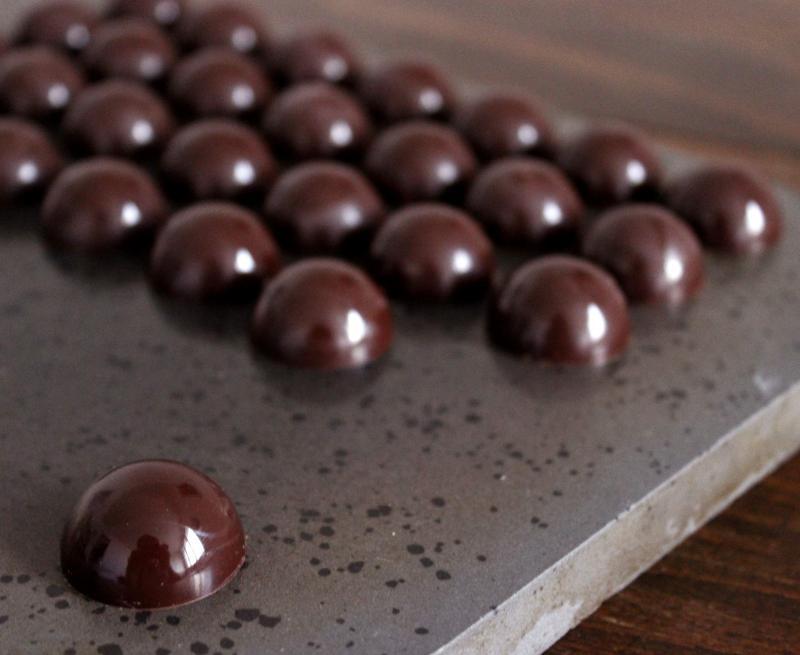
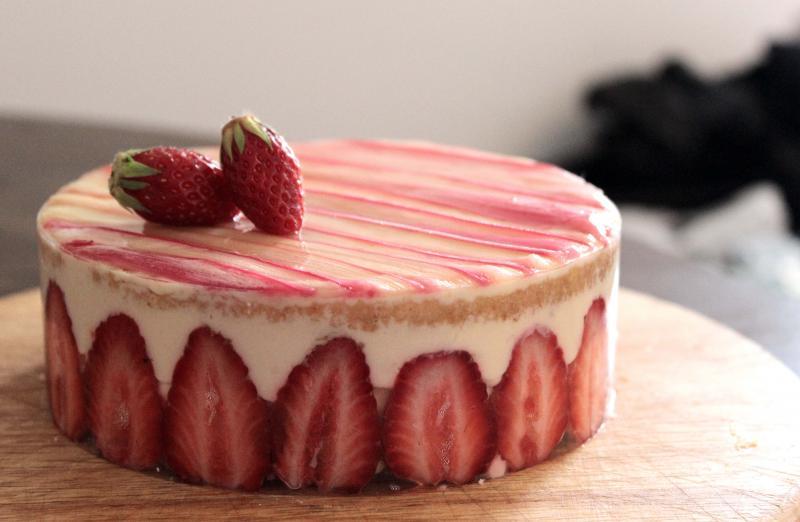
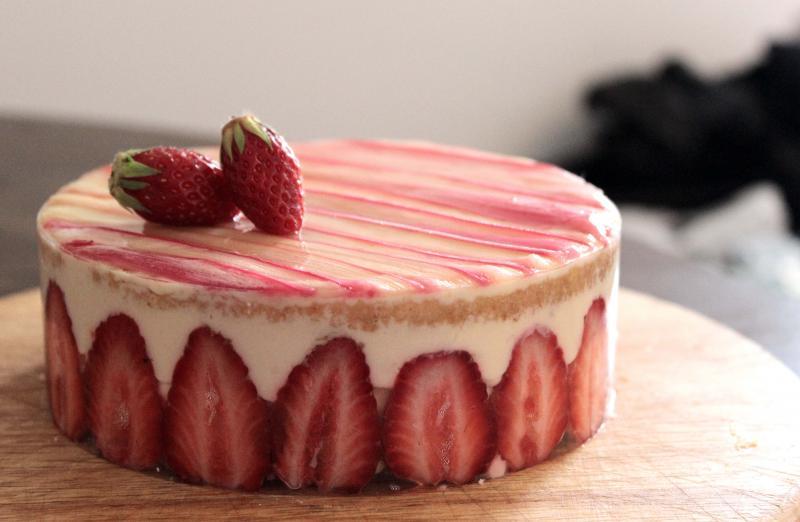
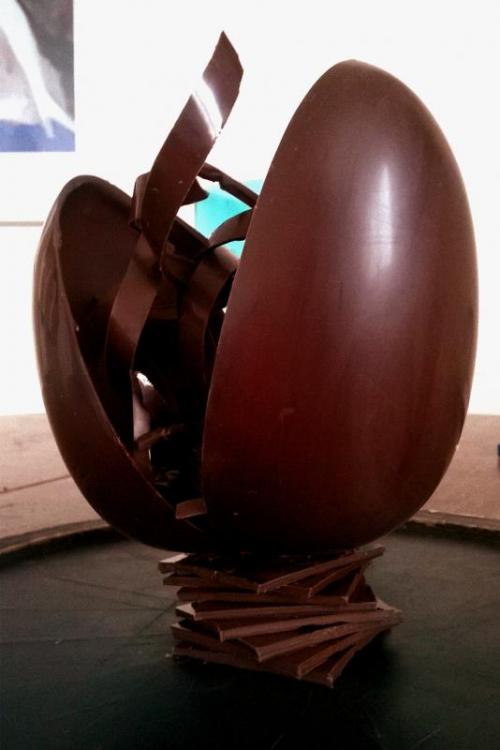
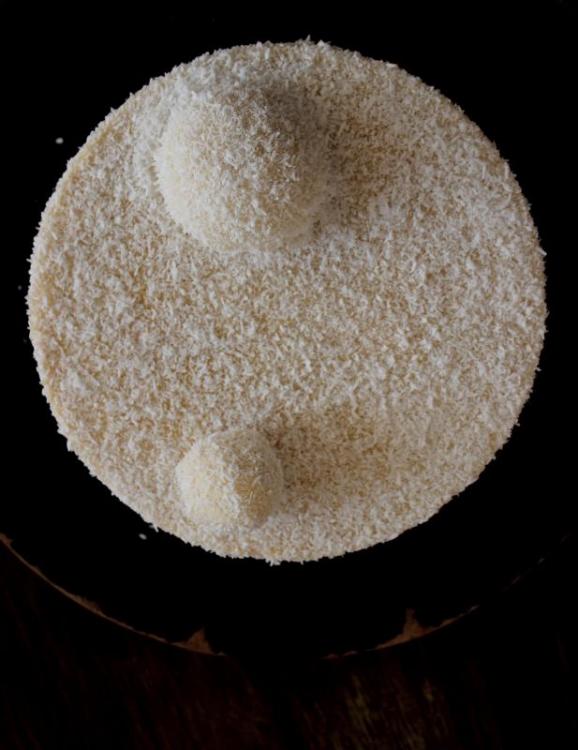
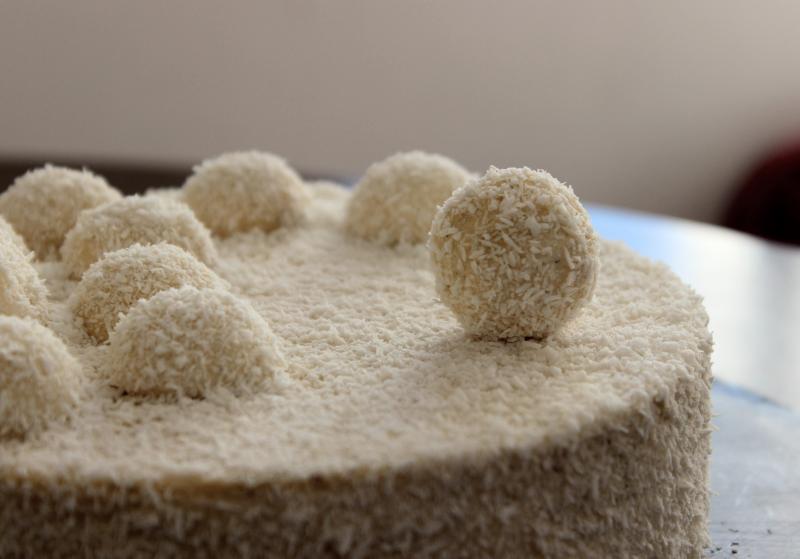
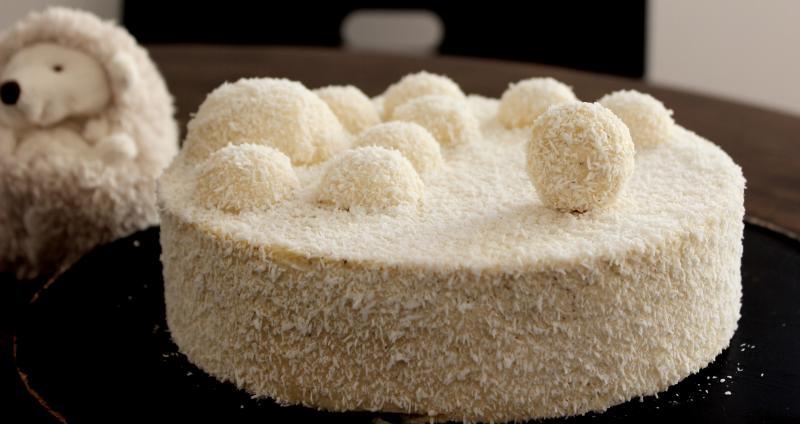

Merveilleux
in Pastry & Baking
Posted
For the record:
3cl = 30ml = 30g of water (it's easier to weigh small amounts like that), but for this application you're going to boil off most of the water anyway, so accuracy isn't very important.
Sucre en poudre is not powdered or icing sugar. Depending on your country, it's either caster or superfine sugar.